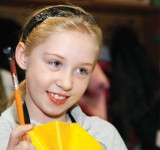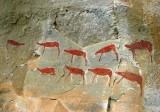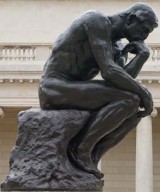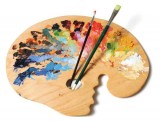Pick up your sketch book and join Susan Ogier as she explores the world of French art...
We live in a global society, so learning to understand other people’s culture is becoming ever more important. This includes finding out more about our neighbours across the Channel, as well as those who live further afield, and a good way to help children develop an appreciation of French customs is to study the country’s art.
 Keep records of first-hand experience
Keep records of first-hand experience
Arrange for your class to take a day trip to France in order to gain that all important first hand experience of French culture. This will provide children with the insight they need to develop an artistic response upon their return to the classroom.
Pack cameras, sketchbooks and drawing materials to take with you on your trip, which children can use to collect visual and sensory information. Plan regular stopping points so they have time to pause, look and reflect upon their surrounding.
You might begin this process right at the start of your day out and finish it, much later, on your return to school in order that the whole journey is recorded in this way. Suggest to the children that they also consider their emotions and feelings at different points during the day. How does ‘travel’ make us feel? How does it feel to speak another language in a shop or café?
On your return to school, the children might use all of this information to create a collaborative drawing of their journey by mapping the photos, sketches, thoughts and ideas onto long pieces of wallpaper lining from a hardware shop. What shape will your ‘map’ take? Use the playground or hall to arrange the sections and photograph your ‘installation’ using digital media.
Develop children’s empathy
Ask the children to investigate the sounds of language from an abstract position. Perhaps you might show some film clips where French is spoken: the children will be able to pick up the visual clues about what is happening, but how do they feel about not understanding a great deal of what a character is saying? Do they think this is important, or does body language also give us clues about what the message might be?
The children might create their own film or documentary exploring these issues or create a ‘sound piece’ by recording a cacophony of spoken sounds with digital media. How do the children think it must feel for refugee, or immigrant children coming to this country without being able to understand or speak the language very well? An activity such as this can be used to begin discussions on difficult issues and help develop empathy in children.
 Neolithic wall displays
Neolithic wall displays
France is famous for its fabulous Neolithic cave art. Develop a sense of awe and wonder in your children alongside an understanding of artistic history by making a virtual visit to the caves at Chauvet via your interactive whiteboard. http://www.bradshawfoundation.com/chauvet/index.php
Initiate discussions to gauge what the children’s ideas are about who the artists were, what their lives were like and what motivated them to make these beautiful works? Who visited these galleries buried in the hills and mountains, and what lighting did they use? What reasons do the children give for thinking that animals were such an important subject matter for these ancient artists? Can the children imagine how these artist’s lives compare to those of artists working today?
Perhaps the children might make their own version of some cave art by drawing onto large sheets of crumpled brown packing paper with natural materials such as earth, stones and burnt wood, just as the cave men had to do.
Examine famous landmarks
Make a connection with geography by asking the children to research iconic landmarks that exist in the French capital city, and to create drawings in their sketchbooks of the key features they notice. The lines on the Eiffel Tower, or the spires and domes of the Basilica de Sacre Coeur, could be amongst the examples children might choose. Encourage pupils to play with these shapes and lines by making further sketches until they have created a simple design.
Offer the children ‘Poly-Block’ printing pads and ask them to etch their design into the soft polystyrene. Having applied printing block ink, pupils can then make any number of prints onto squares of red, blue and white pieces of paper (or fabric, such as cotton sheeting).
You can create an attractive display by taping the individual prints onto a piece of string or ribbon, which can be draped to resemble bunting.
 Take art outside
Take art outside
The enormous public sculptures created by French artist, Niki de Saint Phalle, can inspire your children to design their own piece of art and consider where they might like to see it exhibited.
De Saint Phalle’s work is particularly appealing to children because of the sheer size and the distinctive, colourful patterns that cover them. The simplified, rounded body shapes can be easily interpreted by children with materials such as plastic or natural modelling clay to create maquettes. Children might develop their ideas by creating paper mache shapes which can then be covered by plaster bandage (Art–roc). Finally, ask the children to design a number of different bold patterns in their sketchbooks before painting a combination of these onto their plaster covered sculptures. The children might take these out into the local or school environment and photograph in-situ.
 Cut and paste
Cut and paste
The word ‘Collage’ comes from the French verb ‘coller’, which translates as ‘to stick or to paste’. The technique was made famous by Pablo Picasso and fellow artist Georges Braque through their radical Cubist movement when they began to place items from the real world, such as newspaper or musical scores into their paintings. Today collage is a very popular technique with contemporary artists and an enjoyable and inclusive activity for children where there are no rights and wrongs!
Collect some images of the Cubists’ work on a Powerpoint show and ask the children what they think of them. Why do they think the objects in the paintings are broken up and put together again in this way? Perhaps the children might make some drawings or paintings of some objects of their own choice. When these are dry, ask the children to tear the artwork up and reconstruct them in a different way by using the pieces for collage.
How to use modelling to engage pupils with autism
Ace-Art-And-Design
Outstanding schools: RJ Mitchell Primary
Outstanding schools
Use coaching to turn failures into learning success
Ace-Classroom-Support
